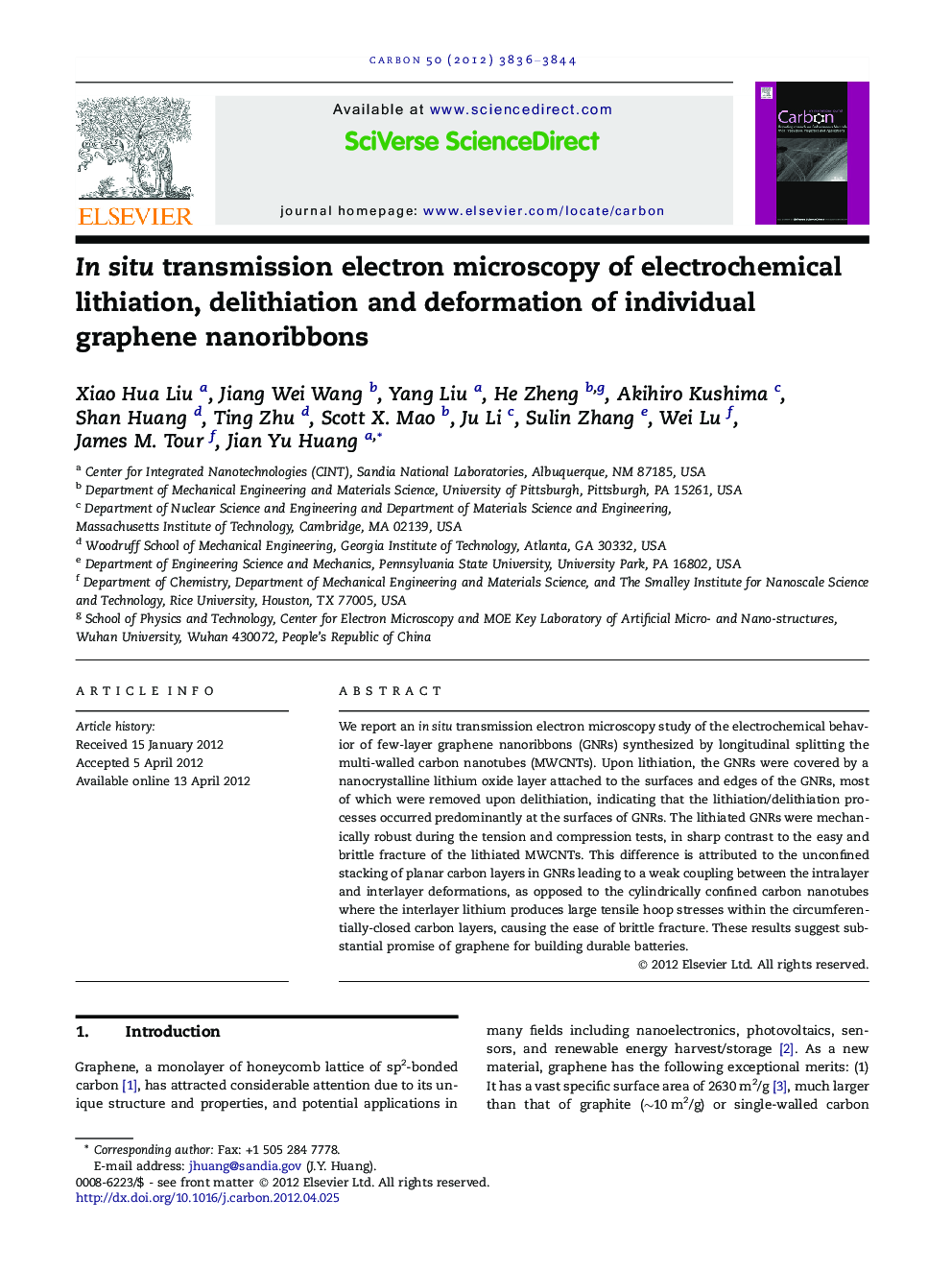| Article ID | Journal | Published Year | Pages | File Type |
|---|---|---|---|---|
| 1415263 | Carbon | 2012 | 9 Pages |
We report an in situ transmission electron microscopy study of the electrochemical behavior of few-layer graphene nanoribbons (GNRs) synthesized by longitudinal splitting the multi-walled carbon nanotubes (MWCNTs). Upon lithiation, the GNRs were covered by a nanocrystalline lithium oxide layer attached to the surfaces and edges of the GNRs, most of which were removed upon delithiation, indicating that the lithiation/delithiation processes occurred predominantly at the surfaces of GNRs. The lithiated GNRs were mechanically robust during the tension and compression tests, in sharp contrast to the easy and brittle fracture of the lithiated MWCNTs. This difference is attributed to the unconfined stacking of planar carbon layers in GNRs leading to a weak coupling between the intralayer and interlayer deformations, as opposed to the cylindrically confined carbon nanotubes where the interlayer lithium produces large tensile hoop stresses within the circumferentially-closed carbon layers, causing the ease of brittle fracture. These results suggest substantial promise of graphene for building durable batteries.
